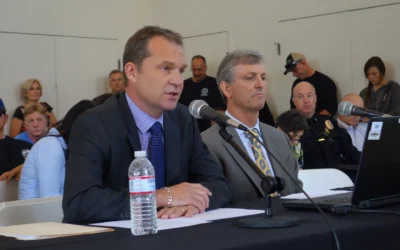Behind a secured door and down a series of hallways, Alex Cabrera and Katherine Won sit at computers, often with multiple monitors above, and work with “bleeding edge” technology.
The SCE energy operations specialists are at the forefront of power procurement and are now gearing up for big changes set to occur on January 31, 2008. That’s when the Market Redesign and Technology Upgrade, perhaps better known as MRTU, goes into effect.
Between now and then, Cabrera and Won will take part in market simulations, practicing new steps to be involved in procuring energy from the state grid overseen by the California Independent System Operator (CAISO). They are part of a group that is responsible for determining the next-day power needs of SCE ratepayers.
With a new application from CAISO called SIBR (Scheduling Infrastructure and Business Rules), and SCE’s own newly launched program, known as PCI, Cabrera and Won are among the first to use the new software. In the coming weeks they will input data, project electrical loads, and make sure everything works as it should by January 31, 2008.
Because the programs are new, there is much that is still to be learned, Cabrera said. “Katherine and I are on the front line with this new software and so far there is no well designed manual and our help line is limited to some of the software testers.”
“We’re trying to find where the errors are in the system,” said Won, a six-year SCE employee who earned a bachelor’s in comparative literature from the University of California, Irvine.
The simulations will give Cabrera and Won time to identify bugs in the software and notify CAISO before the January 31, 2008 MRTU Go-Live date. In the coming weeks and months, they will be joined by others in the simulations, including those who work in Real Time Operations.
To test the system, Cabrera and Won will input data received from CAISO and ensure the accuracy of that information. They will tap figures into the program in such a way that any errors within the applications will be revealed.
“Another thing we do is just play with the software,” Cabrera said. “Rather than following the script verbatim, we just get in and start pressing buttons and try and find out what happens when we press this button and that button.”
MRTU promises to have a positive impact on SCE and its employees.
“This is exciting in that it’s new and we’re on the forefront of a paradigm shift going on in California in relation to the energy markets,” said Cabrera, a 10-year SCE employee who earned a bachelor’s degree in mechanical engineering from Cal Poly Pomona in 1997 and an MBA from Cal State Fullerton in 2003.
MRTU will change in a “massive” way how SCE and other power companies conduct business in California, said Tracy R. Bibb, manager, SCE Day Ahead Operations. Patterned after similar programs which have been in effect for several years in the northeastern United States, MRTU will, among other things, create 2,000 pricing nodes, up from three currently, improve reliability of the grid by putting energy closer to where it is needed, establish a forward energy market, and reduce wholesale costs, he said.
“We’re going to procure the right energy in the right spot the day before so that when we do it in real time tomorrow or the next day, we’re not going to have all the overloads that we see today,” he said. “This is going to give us better optimization, lower prices and improved reliability.”
Under MRTU, prices paid by SCE and other California power suppliers under the jurisdiction of CAISO will become transparent. “We’re going to be sending better pricing signals out to the world,” Bibb said.
But the new programs, tools and market rules are not easy to understand, he said. “If it were simple, we’d be doing it today.”
CAISO, which operates the grid through which power is delivered to SCE and many other California power suppliers, will be the first agency on the West Coast to implement an MRTU.
Yet, if a similar program in place in the northeastern U.S. is any indication, the California MRTU will be successful, said Bibb, who worked for SCE for 25 years before leaving 10 years ago to work for Folsom-based CAISO. He returned to SCE in his new role only in January.
MRTU has been in the planning stages for about seven years, Bibb said. That’s before California’s failed experiment with deregulation forced utilities like SCE to pay drastic rates for energy resources from outside sources.



0 Comments